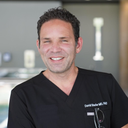I had my lower eye lids done. They are so bad, they hang out and too much skin was taken out. You can see the inside of my eye ball and I have to keep putting drops on them. I still have bags.
They look so bad, I can't go out. What can be done to fix them? It looks like the surgeon just cut all my skin off. I can't stand it! They hurt and my eyes want close all the way. The bottom lids go over the top and stick. I'm very worried.
Answers (10)
From board-certified doctors and trusted medical professionals
Dr. David Shafer, MD, FACS

Dr. David Shafer, MD, FACS
Board Certified Plastic Surgeon
Answer
Dr. Kenneth D. Steinsapir, MD

Dr. Kenneth D. Steinsapir, MD
Oculoplastic Surgeon, Board Certified in Ophthalmology
Answer
Dr. Mark Berkowitz, MD

Dr. Mark Berkowitz, MD
Oculoplastic Surgeon, Board Certified in Ophthalmology
Answer
Dr. William Portuese, MD
Dr. William Portuese, MD
Board Certified Facial Plastic Surgeon
Answer
Dr. Hisham Seify, MD, PhD, FACS
Dr. Hisham Seify, MD, PhD, FACS
Board Certified Plastic Surgeon
Answer
Dr. Christopher L. Hess, MD
Dr. Christopher L. Hess, MD
Board Certified Plastic Surgeon
Answer
Dr. Scott E. Kasden, MD, FACS
Dr. Scott E. Kasden, MD, FACS
Board Certified Plastic Surgeon
Answer
Dr. Stella Desyatnikova, MD
Dr. Stella Desyatnikova, MD
Board Certified Facial Plastic Surgeon
Answer
Dr. Robin T.W. Yuan, MD
Dr. Robin T.W. Yuan, MD
Board Certified Plastic Surgeon
Answer
Dr. Brooke R. Seckel, MD, FACS (retired)
Dr. Brooke R. Seckel, MD, FACS (retired)
Board Certified Plastic Surgeon
Answer
More Eyelid Surgery Questions
See all Eyelid Surgery Q&AWE SEND PRETTY
EMAILS
What’s trending? Who’s turning heads? Which TikTok myths need busting? We’ve got you. No fluff, no gatekeeping—just real talk. Get our free, unfiltered newsletter.